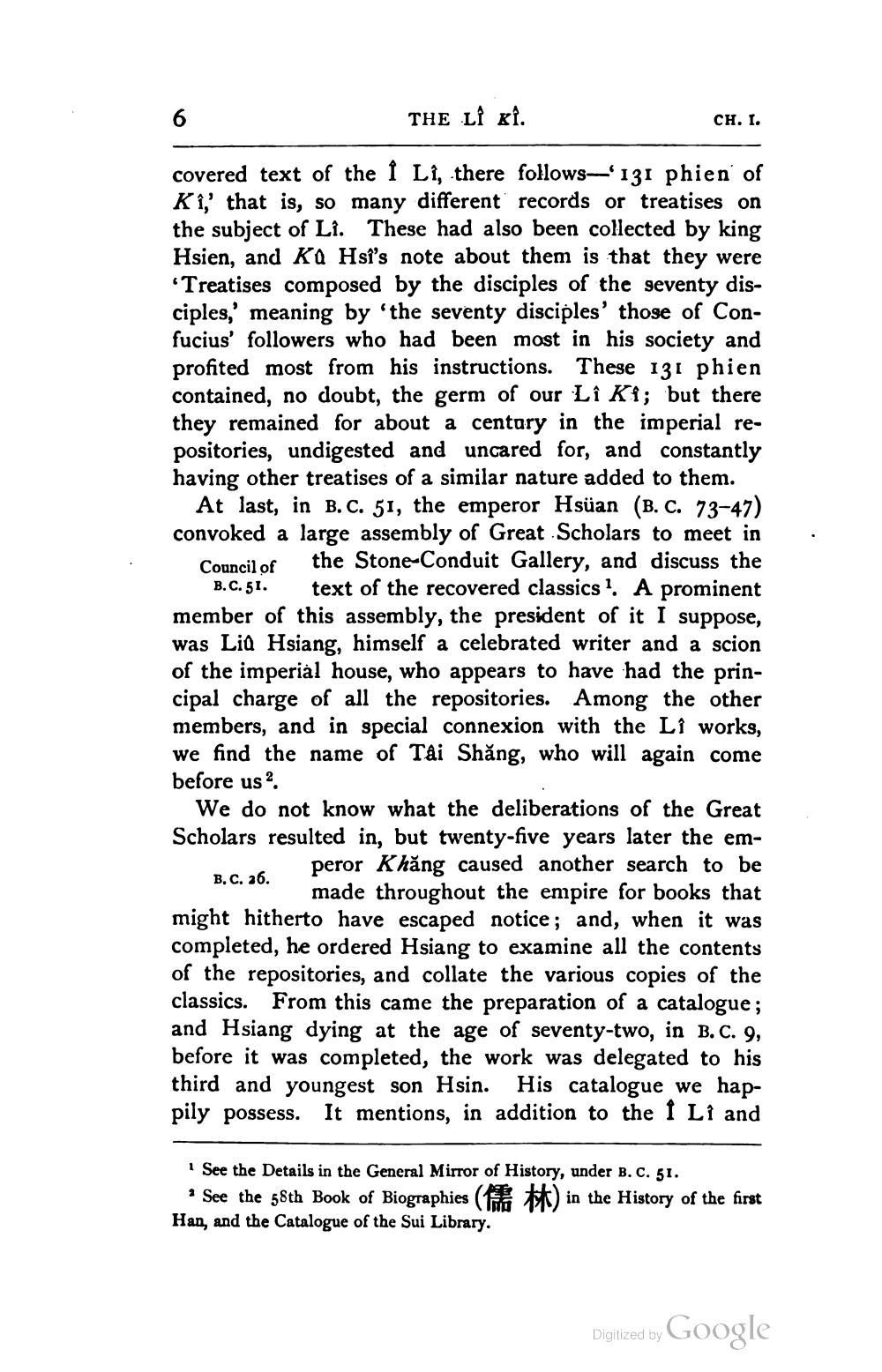________________
6
THE LI KI.
covered text of the I Li, there follows-131 phien of Ki,' that is, so many different records or treatises on the subject of Li. These had also been collected by king Hsien, and Ka Hsi's note about them is that they were "Treatises composed by the disciples of the seventy disciples,' meaning by 'the seventy disciples' those of Confucius' followers who had been most in his society and profited most from his instructions. These 131 phien contained, no doubt, the germ of our Li Ki; but there they remained for about a century in the imperial repositories, undigested and uncared for, and constantly having other treatises of a similar nature added to them.
At last, in B. C. 51, the emperor Hsüan (B. C. 73-47) convoked a large assembly of Great Scholars to meet in the Stone-Conduit Gallery, and discuss the text of the recovered classics1. A prominent member of this assembly, the president of it I suppose, was Liû Hsiang, himself a celebrated writer and a scion of the imperial house, who appears to have had the principal charge of all the repositories. Among the other members, and in special connexion with the Lî works, we find the name of Tâi Shăng, who will again come before us 2.
Council of B. C. 51.
CH. I.
B. C. 26.
We do not know what the deliberations of the Great Scholars resulted in, but twenty-five years later the emperor Khăng caused another search to be made throughout the empire for books that might hitherto have escaped notice; and, when it was completed, he ordered Hsiang to examine all the contents of the repositories, and collate the various copies of the classics. From this came the preparation of a catalogue; and Hsiang dying at the age of seventy-two, in B. C. 9, before it was completed, the work was delegated to his third and youngest son Hsin. His catalogue we happily possess. It mentions, in addition to the I Li and
1 See the Details in the General Mirror of History, under B. C. 51.
* See the 58th Book of Biographies () in the History of the first
Han, and the Catalogue of the Sui Library.
Digitized by
Google




